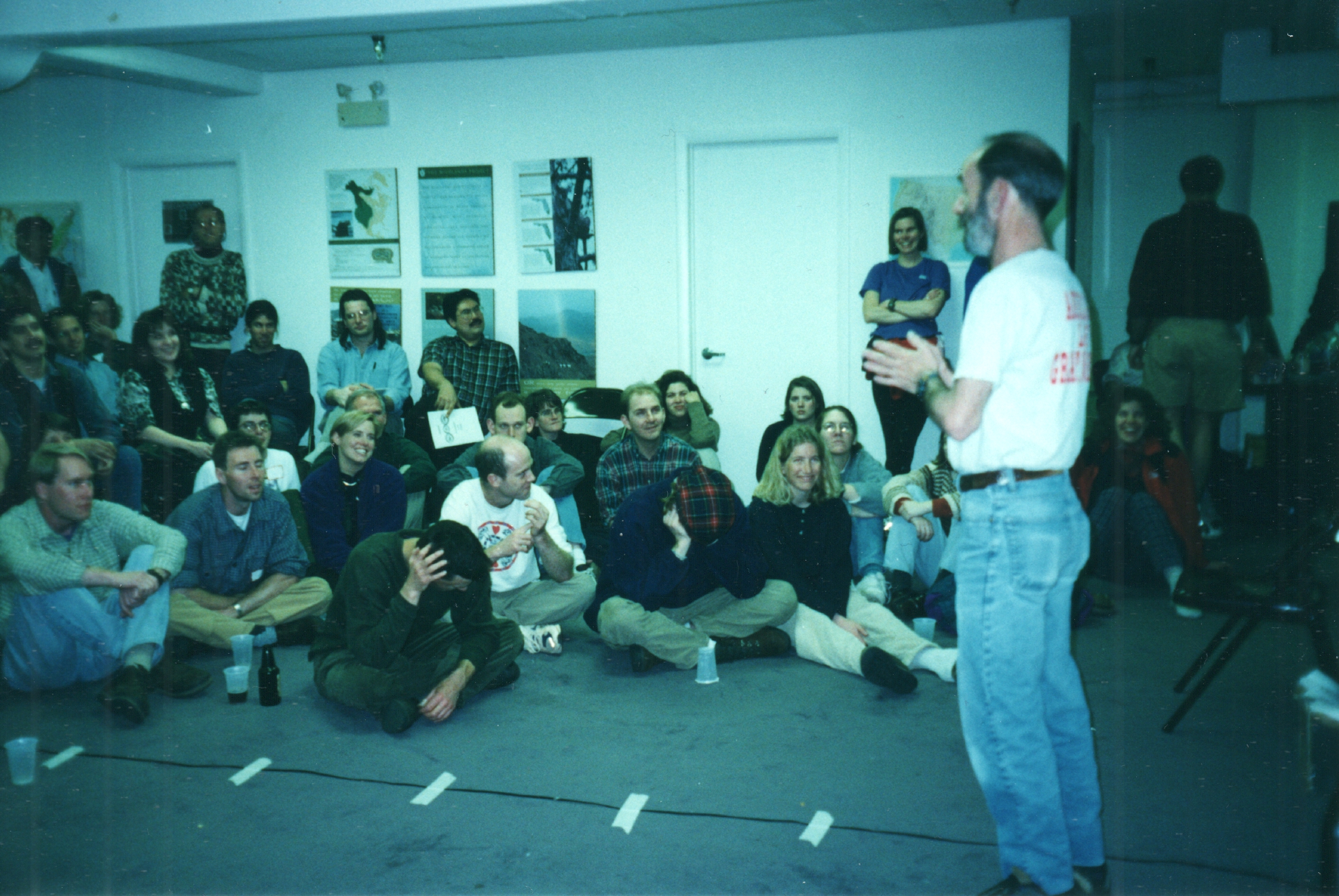
The ongoing protection of the Arctic Refuge has only been possible because of the efforts of numerous environmental organizations, Indigenous communities, and individual advocates. In 1953, George L. Collins and Lowell Sumner published “Northeast Arctic: The Last Great Wilderness” in the Sierra Club Bulletin, and it quickly became a key text in inspiring conservation interest in Arctic Alaska. In the following years, conservation organizations campaigned for the creation of a wilderness area in northeastern Alaska. Activists like Olaus Murie toured with films and slide shows, mobilizing grassroots audiences and pushing the Eisenhower administration to establish the Arctic National Wildlife Range in 1960.
As interest in drilling the Arctic increased in the late 1970s, the Alaska Coalition campaigned for legislation to protect it. Again targeting the grassroots, member organizations collaborated on brochures, flyers, and newsletters that encouraged concerned citizens to write letters to local newspapers and to contact their elected officials. Many of the materials developed by the Coalition emphasized the array of organizations that had joined forces, leveraging the broad reach and appeal of mainstream conservation. The sale of Alaska Coalition merchandise was also part of the campaign, which funded the cause and spread the message simultaneously. The campaign stressed wilderness values and conveyed this idea with breathtaking images of Alaskan lands, delivered to grassroots audiences through multimedia tours.
The Alaska Coalition succeeded in passing the Alaska National Interest Lands Conservation Act (ANILCA), which enlarged the renamed Arctic National Wildlife Refuge. However, this legislation also left the so-called “1002” coastal plain area in legislative limbo, giving a future Congress the power to protect the land as wilderness or allow fossil fuel development there. Conservation groups remained active as new drilling threats emerged in the late 1980s, but by this time a new form of Refuge advocacy had emerged. In 1988, Lenny Kohm, a photographer who lived in Sonoma, California, set out to create the Last Great Wilderness (LGW) slide show as an organizing tool. Like their predecessors, Kohm and the Sonoma Coalition for the Arctic Refuge would attempt to mobilize grassroots audiences through intimate showings that featured images of Arctic lands. They worked with local and national organizations to host the shows, providing detailed instructions for planning a successful event. Along with these host organizations, LGW presenters publicized the shows through pamphlets, flyers, newspapers, and other materials. Rather than just introduce the issue, they encouraged attendees to take action, providing templates for letter writing and suggestions and fact sheets to use when contacting their representatives. Members of the Sonoma Coalition, including Kohm and Glendon Brunk, published their own writing to further the cause.
During his two decades of tours, Kohm worked with the Alaska Coalition and its member organizations, including the Sierra Club and, later, the Alaska Wilderness League, to host, fund, and plan LGW events. But the LGW differed from earlier Arctic advocacy because its presenters framed the defense of the Refuge as a human rights issue. Kohm’s own concern developed during the time he spent living with and learning from the Gwich’in, and the LGW project itself was undertaken with support from Gwich’in leaders. The Porcupine Caribou Management Board, the Gwich’in Steering Committee, the Vuntut Gwitchin First Nation, the Gwich’in Tribal Council, and other Indigenous groups helped select Gwich’in representatives to tour with Kohm and share their stories and knowledge with grassroots audiences.
Since the creation of the Gwich’in Steering Committee in 1988 and the launch of the LGW project, the grassroots movement to defend the Arctic Refuge has continued to grow and incorporate a broader set of perspectives. On-the-ground rallies and political events have brought together Indigenous leaders, religious spokespeople, and elected officials to address supporters and lead lobbying efforts. More recently, organizers have moved online to reach larger audiences, using social media to share Gwich’in perspectives and engage a new generation in the movement to defend the Arctic Refuge.
The Alaska Coalition in the 1970s
Letters about the LGW slide show
Behind the scenes of the LGW slide show
Essays and Advocacy Materials from the LGW
Photograph by Pamela A. Miller.
